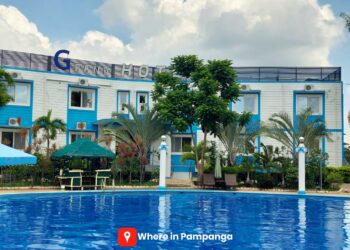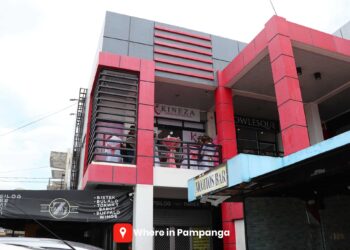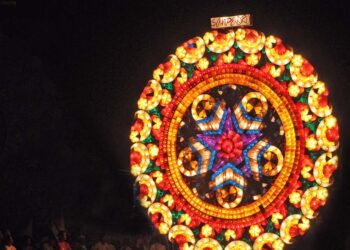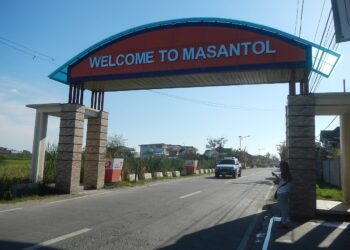The Municipality of Apalit is an enclosed municipality in the maritime province of Pampanga.
Apalit is positioned in the southern part of Pampanga bounded in the south by Calumpit, Bulacan, in the west by the metropolis of Macabebe, and San Simon in the north.
Apalit was named after a big sturdy tree with the scientific name “Pterocarpus indicus” also known as “Narra,” known by Kapampangan as “Apalit.”
History
The Malayan settlers that inhabited the watersides of the Rio Grande de la Pampanga in the early stage of the 14th century were the forefathers of most people from Apalit. The early custom of the Malayan settlers, especially the arts and culture influenced the rest of the provinces of Central Luzon.
When Apalit was established, there was a big sturdy tree called “Pterocarpus indicus or Apalit” (also identified as Narra) in Kapampangan at the present-day location of the Catholic Parish Church of Saint Peter. The municipality was named from that enormous distinguished tree, now the National tree of the Philippines.
During the tenure of the then Spanish Governor-General Gonzalo Ronquillo de Penalosa in 1582, Apalit was officially recognized as an independent town. Primarily, the town of Apalit was composed of a 4 encomiendas specifically, Apali (Pale), La Castilla, Cabambangan, and Capalangan. The enconmienda “La Castilla” was formed into a town proper (Poblacion), and later on, was given a new name as San Juan Nepomuceno.
In 1597, The Apalit Parish of Saint Peter was founded after parting with the Parish of Calumpit.
On June 28, 1844, the traditional fluvial parade of Saint Peter or also known as “Libad ng Apung Iru” was introduced by Capitan del Pueblo Don Pedro Armayan-Espiritu y Macam which is still celebrated in the present day annually in Apalit during it town fiesta.
Barrio Capalangan which derived its name from the Kapampangan word “Palang” meaning machete or bolo is believed to have been founded by the son of a certain Gatbonton named Pangpalung who in his youth was called Macapagal.
The name of Barrio Capalangan was acquired originally from the Kapampangan word “Palang,” which means Bolo or Machete, rumored to have been started by the son of a particular Gatbonton called Pangpalung who in his youth also known as “Macapagal.” This Barrio was the home of Panday Pira, the 1st well-known Filipino maker of cannons. He produced cannons called “Lantakas” for the army of Rajah Soliman, and after the Spanish acquisition of Manila, he was employed under Adelantado and Governor General Miguel Lopez de Legaspi.
From the 1850s until the 1910s, Puerto Sulipan was once considered a sanctuary of big businesses, politics, and “high society” in the Philippines, during the period of Capitan del Pueblo Don Joaquin Arnedo de la Cruz y Tanjutco and his heiress wife, Dona Maria de la Paz Sioco y Carlos, viuda de Tanjutco.
Barangay
The Municipality of Apalit is subdivided into 12 barangays.
| Balucuc (Nuestra Señora de la Divina Pastora) | Calantipe (Santo Niño) | Cansinala (Nuestra Señora del Rosario) |
| Capalangan (Holy Cross) | Colgante (Holy Family) | Paligui (Chair of St. Peter / Apung Iru) |
| Sampaloc (San Roque) | San Juan (San Juan Nepomuceno) (Poblacion) | San Vicente (San Vicente Ferrer) (Business District) |
| Sucad (Santa Lucia) | Sulipan (Christ the Eternal High Priest) | Tabuyuc (Santo Rosario) |
Festivals
Apung Iru Festival
Libertad ng “Apung Iru” also known as the “Fluvial parade of St. Peter” might be the famous and most anticipated festival in Apalit, where faithful devotees from the town and neighboring municipalities and provinces commemorate a three-day banquet in praise and indebtedness to St. Peter the Apostle, the patron saint of the town, for giving a generous, momentous year of harvest.
Every the 28th-30th month of June, the town of Apalit will be filled with different colorful pennants; and creative designs on each of their boats as it crosses along the Pampanga River. Also, the festival is a celebration with a lot of food and smile from people celebrating the event.
Taken into an account as one of the most well-known religious parades in Pampanga, the first fluvial parade that happened yearly started on the 28th of June in 1844, where a century-old ivory image of St. Peter of the Apostle was paraded along the riverside of the Pampanga River.
The human-sized, ivory image of “Apung Iru” is dated back to the last quarter of the 1700s.
Notable Landmark
San Pedro Apostol Church
In 1597, the Parish of Apalit parted from the Parish of Calumpit. Fr. Pedro de Vergara was appointed as the First Parish Priest of Apalit.
On June 28, 1844, the traditional fluvial parade so-called “Libad ng Apung Iru” in celebration of Saint Peter the Apostle was founded by Capitán del Pueblo Don Pedro Armayan Espíritu.
The holy artifact of St. Peter was consecrated in the Parish on July 22, 2017. The holy relic is a portion of the bones of the remains of St. Peter. The St. Peter Parish Church is the only church that has the artifact of St. Peter other than St. Peter’s Basilica in Rome.
References:
*https://en.wikipedia.org/wiki/San_Pedro_Apostol_Church_(Apalit)
*https://www.pampanga.gov.ph/index.php/about-pampanga-2/189-capitol/tourism/municipality/309-apalit-2.html
*https://www.philatlas.com/luzon/r03/pampanga/apalit.html
*https://en.wikipedia.org/wiki/Apalit
*https://www.philatlas.com/luzon/r03/pampanga/apalit.html
*For corrections or commentaries, please email us at whereinpampanga@gmail.com



















